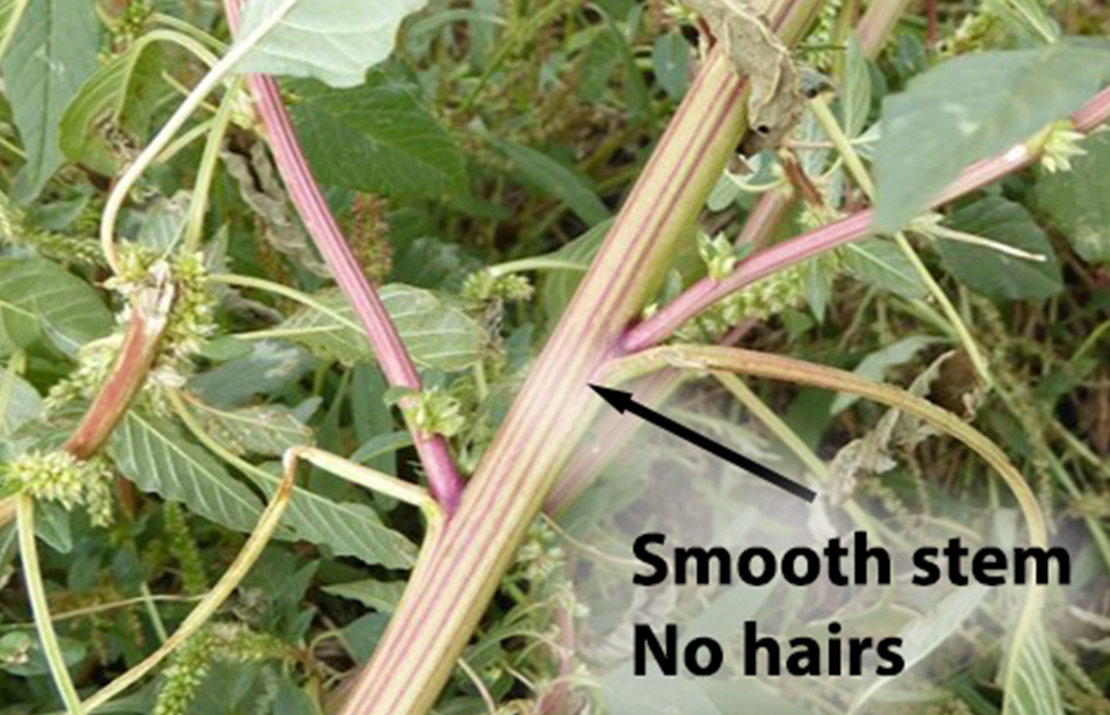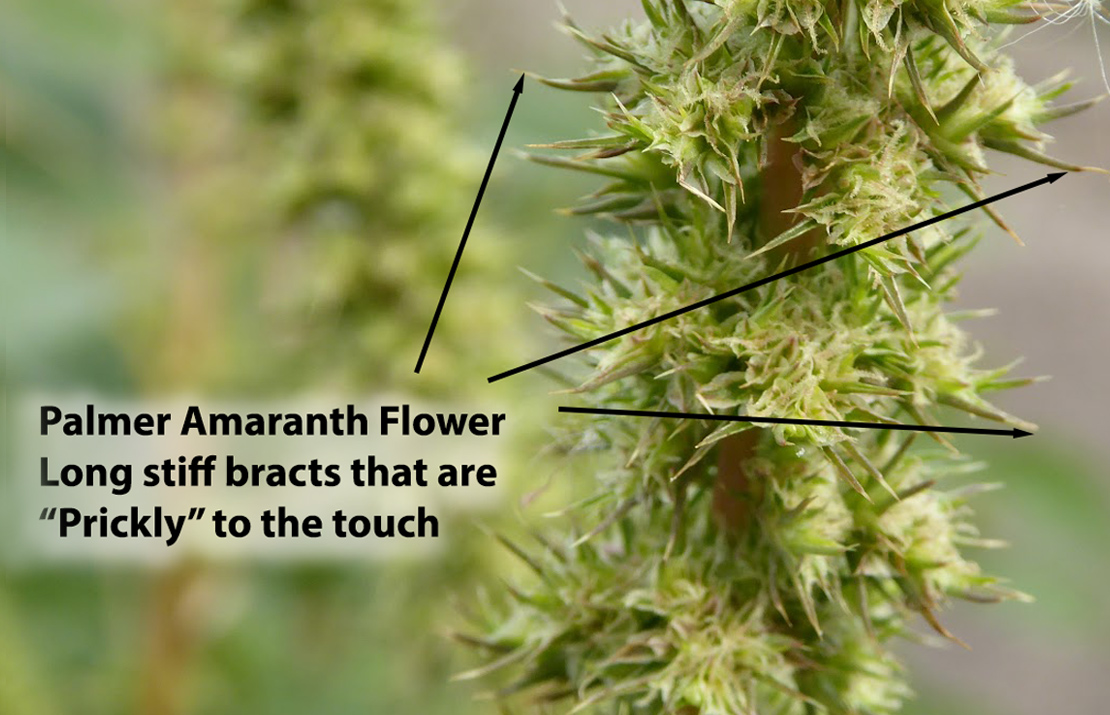Return to Amaranth Aware main menu
Palmer amaranth is a fast growing weed native to the southwestern United States and northwestern Mexico, and has spread east and north. It has developed resistance to multiple classes of herbicides and their different modes of action, making it very difficult and expensive to control. Palmer amaranth is a prolific seed producer. Up to 500,000 seeds can come from one plant. It is also highly competitive, making it important to identify the presence of the plant quickly in order implement a management strategy.



- All parts of the plant are smooth. If there are fine hairs on the leaf, petiole, or stem then it is not Palmer amaranth.
- The leaf shape for Palmer amaranth is diamond shaped. Waterhemp has a long linear shape to oval. Redroot has round to oval shaped leaves.
- The final characteristic to look at is the petiole length. Fold the petiole against the base of the leaf blade. Palmer amaranth has petioles that are longer than the leaf. Redroot and waterhemp have petioles that do not exceed the length of the leaf.
- The leaves of some Palmer amaranth plants have a whitish v-shaped mark (chevron) on them. Not all Palmer amaranth plants display this characteristic, but it is common.
- The seedhead on a female Palmer amaranth plant can be very long, up to 2 feet. The seedhead is also very prickly to the touch, both in the green stage and brown stage.
- Palmer amaranth can grow to be 6 to 8 feet tall.

